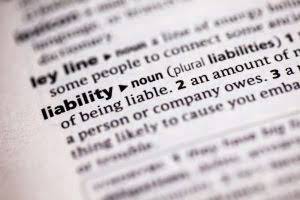
When it comes to accounting, notes receivable is classified as a current or non-current asset based on its maturity. A note that will be due within the next year is considered a current asset, while one with a longer maturity date falls under non-current assets. Sometimes a company receives a note when it sells high-priced merchandise; more often, a note results from the conversion of an overdue account receivable. When a customer does not pay an account receivable that is due, the company may insist that the customer give a note in place of the account receivable. This action allows the customer more time to pay the balance due, and the company earns interest on the balance until paid.
- The amortized discount is added to the note’s carrying value each year, thereby increasing its carrying amount until it reaches its maturity value of $10,000.
- However, it’s important to remember that there are risks involved with lending money – so proper risk management strategies should always be employed when dealing with notes receivable.
- If too much of a company’s capital is tied up in notes receivable, it could limit their ability to invest in other areas of their operations.
- On the maturity date, both the Note Receivable and Interest Revenue accounts are credited.
- Notes can also be used for sales of property, plant, and equipment or for exchanges of long-term assets.
Notes receivable have several defining characteristics that include principal, length of contract terms, and interest. The principal of a note is the initial https://www.bookstime.com/ loan amount, not including interest, requested by the customer. If a customer approaches a lender, requesting $2,000, this amount is the principal.
Create a free account to unlock this Template
For each sale, you issue a notes receivable to the company, with an interest rate of 10% and a maturity date 18 months after the issue date. Often, a business will allow customers to convert their overdue accounts (the business’ accounts receivable) into notes receivable. Debts included in accounts receivable are usually short-term with payment due in 30 days or less. There may be nothing notes receivable in writing besides your invoice, but you’re still entitled to payment once you deliver the goods. If the client wants to pay over a longer period, or you’re not sure they’re trustworthy, you might prefer to confirm the debt with a promissory note. There’s risk for the lender, as with any investment, but the range of legal options available to them reduces that risk substantially.
On January 1, 2018, Waterways purchased merchandise in the amount of $250,000. BWW agreed to lend the $250,000 purchase cost (sales price) to Waterways under the following conditions. The conditions of the note are that the principal amount is $250,000, the maturity date on the note is 24 months, and the annual interest rate is 12%. In contrast, notes receivable (an asset) is a more formal legal contract between the buyer and the company, which requires a specific payment amount at a predetermined future date. A note receivable is a written promise to receive a specific amount of cash from another party on one or more future dates.
What is the approximate value of your cash savings and other investments?
Possibility 1 – The customer finally pays on 4/30, two months after the original due date. The company charges a 10% penalty on the outstanding balance, which is $17 (1,020 x 10% x 60/360). Understanding how notes receivable are classified is essential because it affects the way they appear on financial statements and impacts decision-making processes. By properly categorizing them according to their specific characteristics, businesses can accurately assess their overall financial health and make informed decisions about future investments and expenditures. Notes receivable differ from accounts receivable in that they are more formal and legally binding.

When a company is expected to get the amount within a year or an operating cycle, it is treated as a current asset. Notes receivables are the written promise that states the date when the amount will be paid to the creditors (Company who sell goods on credit) by the debtor (Customer to purchase goods on credit). To determine the duration of the notes, both the dates of the notes and their maturity dates must be known.
